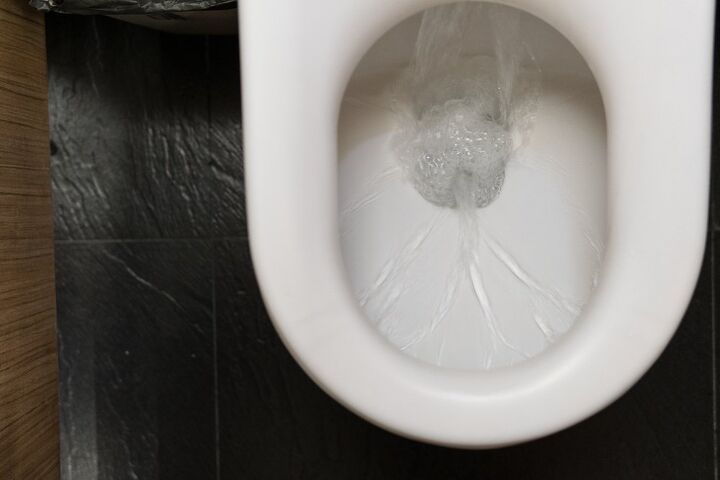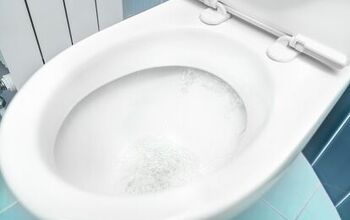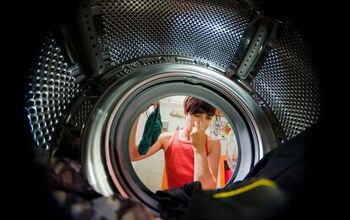Why Does My Toilet Flush Twice? (Find Out Now!)

When your toilet is working as it should, it is an indispensable fixture that conveniently, quickly, and sanitarily gets rid of human waste. But a toilet is not infallible, and even one that’s maintained well will malfunction eventually.
One malfunction is the double flush, and this article will explain what this malfunction is, why it happens, and what can be done to ensure it doesn’t keep happening.
The double flush is most likely the result of a flapper malfunction. The toilet may also have too much water in its tank, and such is usually caused by a malfunctioning fill valve. In either case, replacing the malfunctioning component will be necessary. If you don’t want to get your hands dirty by fiddling around inside the toilet’s tank, get help from a professional plumber.
Do You Need to Install or Repair a Toilet?
Get free, zero-commitment quotes from pro contractors near you.

How a Toilet Is Supposed to Work
Although toilets perform a vital function, they aren’t complex fixtures, which means it isn’t hard to understand how they work. There are two main components: the toilet tank and the bowl.
When you push down on the handle, which is on the tank’s exterior, you activate the flushing mechanism. Once this mechanism is activated, the water that’s stored in the tank will rush into the bowl. At the same time, waste water that’s in the bowl will get sucked down the toilet’s drain, where it’ll eventually end up in the main sewer line.
When all the water in the bowl and tank are gone, a component known as the fill valve will start to refill the tank to the appropriate level. At this time, water will also go through the overflow tube, refilling the bowl. Once the tank and bowl are both filled with an adequate amount of water, the toilet is ready to be flushed again.
The Flapper’s Role in the Flushing Process
An important component in the flushing process is the flapper. Once this lifts, the tank water is released to the bowl via the flush valve. As the tank empties, the flapper will lower until it rests again on the flush valve. Once the flapper is stationary, water will not be able to enter the bowl.
When the flapper is stationary, the fill valve will activate, and this is what brings water back into the tank. During the refilling, some of the water will go into the overflow tube to fill the bowl.
Because the flapper plays an important role in the flushing process, a malfunction can slow or disable the toilet. A malfunctioning flapper is one of the common causes of the double flush.
When a Loose Toilet Flapper Is the Problem
The toilet flapper is a rubber component that’s located in the tank, and it’s often referred to as a trap door; when this trap door is open, water from the tank will rush through.
But because it’s a lightweight component, if it’s not in the right position, it won’t close fast enough after you press the flush handle. When this happens, more water than is necessary will exit the tank, entering the bowl even after the first flush is complete.
And because the toilet flush is mainly generated by gravity, if there’s too much water in the bowl, a flush will happen a second time.
A double flush isn’t the only consequence of a malfunctioning flapper, but it’s definitely a common one. It can be fixed DIY, but the homeowner will have to get their hands a little dirty.
To know how to fix this problem DIY, read through the steps below. But if you don’t want to handle a loose or malfunctioning flapper on your own, it’s best to get in touch with a professional plumber, as they will be able to do this for you.
Solution
The first thing you need to do is take the lid off the toilet tank, as with this gone you’ll be able to clearly see what’s going on inside the tank.
Now flush the tank. When you do, look to see how the flapper reacts. Does it close on its own or does it stay open even after the water is gone? If the latter phenomenon is observed, then such is likely the reason why you’re experiencing a double flush.
Adjustable Flappers
If you have an adjustable cone-style flapper, you should turn the dial that’s located on the top of this component, as doing so will open the larger holes that are near the top of the flapper, releasing the trapped air inside and making the flapper less buoyant. When the flapper loses air, it will sink quickly, sealing off the water and preventing a second flush from occurring.
If you don’t have an adjustable flapper, then you may need to replace the one you have with a heavier model. Don’t worry, for doing so is not difficult; just follow the replacement steps that are outlined below.
Purchasing a New Flapper
First, you’ll need to go to your local home improvement store to get the right flapper. You can also get one of these through Amazon or another online store that sells plumbing fixtures. You should look for a flapper that matches your toilet’s brand and/or model, but you can also get a universal flapper.
Note: Remember to keep weight in mind as you shop, so keep an eye out for heavier-than-usual flappers.
Replacing a Flapper DIY
When you’re ready to replace the flapper, turn off the water supply. There should be a shutoff valve near your toilet, either on the back or side wall. Once the water supply is off, flush the toilet until the tank is empty.
Now remove the old flapper. Keep in mind that most flappers snap over the little years on the overflow tube. Once the old flapper is off, put the new flapper on the overflow tube.
Once the flapper is in position, attach the chain to the flapper. There should be an adequate amount of slack, i.e. it shouldn’t be too tight or too loose.
Once everything is hooked up correctly, turn the water back on to see if the flapper works correctly. You may need to readjust a couple times, but don’t worry; you’ll get it eventually!
When There’s Too Much Water in the Tank
If there’s too much water in the tank, the double-flush phenomenon can be a consequence. The fill valve is probably behind there being too much water in the tank. If this component is malfunctioning or not set correctly, then the toilet’s tank will struggle to refill properly.
The good thing here is that the fill valve can be adjusted to limit how much water goes in your tank. Here’s what you have to do:
Solution
If your toilet’s fill valve has a float arm, you’ll need to grab a screwdriver and adjust the screw that’s at the top of the fill valve, as doing so will lower the float arm. If you don’t see an adjustment screw, it’s likely the fill valve is old, and therefore replacement will be necessary.
If the toilet fill valve has a float cup, you should squeeze the flow cup and slide it down, as doing so will lower the water level in the tank. Keep in mind that some models will utilize a water level adjustment rod, and you can use this to lower the water level in the tank.
Do You Need to Install or Repair a Toilet?
Get free, zero-commitment quotes from pro contractors near you.

Related Questions
Is double flushing different than a continuous flush?
The double flush and continuous flush problems are related, and that’s because both problems are usually traced to a malfunctioning flapper. The double flush problem is less annoying (not by much) than the continuous flush, yet both problems should be addressed immediately when identified.
Is hiring a professional plumber necessary?
A professional plumber will have the know-how and tools necessary to fix a double-flushing toilet on the first try. Furthermore, you won’t have to worry about the plumber damaging your system while attempting to fix it.

Matt loves everything DIY. He has been learning and practicing different trades since he was a kid, and he's often the first one called when a friend or family member needs a helping hand at home. Matt loves to work with wood and stone, and landscaping is by far his most favorite pastime.
More by Matthew Mountain



























